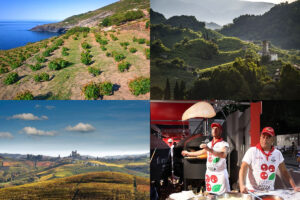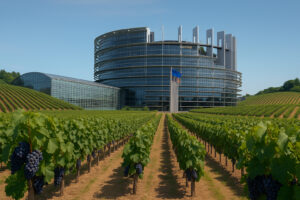According to a recent report from Assoenologi (association of enologists) on the state of Italian wine in 2010, there is a significant change in the air: the demand for Italian red wines, except on some markets, is much lower than for white wines. A trend, in the total sales of Italian wines, that is taking an opposite direction and Assoenologi found 60% in favor of whites and 40% reds and rosé. The overall figure probably expresses the production of wines made from white grapes (including, therefore, even sparkling and sweet wines and, paradoxically, white wines made from red grapes) and that, according to a more precise definition in terms of type, seems to confirm, at least according to estimates by some major white wine producers, or “Bianchisti” of Enotria that WineNews “surveyed”.
Not only that, but style (territorial wine versus industrial wines; wines from ancient vines versus international; light and drinkable wines versus powerful and woody wines), seems much more real, if one must speak of a new trend and can be either white or red wines.
“White wines, of course, represent a significant portion of our business,” says Michele Bernetti, head of Umani Ronchi, one of the most important and prestigious wineries in the Marche region, “while sales are stable in traditional markets such as North America and Europe, they are still basically lower than the demand for red wines. Verdicchio is an important white wine and is holding up well on the market but it isn’t showing an increase in demand”.
Piero Mastroberardino, leader of the historic brand of the Campania region, echoes the words of Michele Cernetti: “historically, there has always been a strong presence of white wines in Irpinia, which basically are holding their own, at least as far as our production is concerned. I do not see an increase in demand,” continues Mastroberardino, “rather, I see a definite increase in interest towards red wines. The Taurasi wines have made huge improvements in quality and represent a designation on the rise, but if we also produce an easier Irpinia Aglianico, we are certain it will sell fast”.
Gianni Venica, head of the company Collio Friuli says more or less the same: “Our company is bianchisti. Over the last 10, 12 years we have seen a growing interest in the white wines of Friuli, despite a strong campaign in favor of red wines, starting with their superior benefits.
It seems a bit risky to me however, to speak of a completely reverse trend. We are pleased with our results,” continued Gianni Venica, “fresher and lighter white wines are selling very well, but I think this is a stabilizing factor and not “taking over” the red. For example, red wine in emerging markets,” concluded Venica, “is undoubtedly more appealing mainly for mundane aesthetic reasons”.
And, from the Veneto region, Bianchisti par excellence, Aldo Lorenzoni, director of the Consortium of Soave has similar words: “we are Bianchisti. Our wines are doing very well and enjoying a favorable moment on international markets. But to say there is a decisive shift in consumer tastes in favor of white wines, is perhaps a bit too much. There may be a preference for fresher and lighter wines, which, however, can also be red”.
In Sicily, Alessio Planeta head of the historic brand based in Menfi, explains: “there may be a certain revival of average priced white wines, but the situation basically seems very stable. Although we produce slightly more white wines, I do not really see an increase in this type of request. This is not the new trend. Instead, I see a much more specific stylistic tendency of companies offering more territorial products, indigenous grape varieties and more elegant than powerful wines and consumers are responding positively”.
Copyright © 2000/2025
Contatti: info@winenews.it
Seguici anche su Twitter: @WineNewsIt
Seguici anche su Facebook: @winenewsit
Questo articolo è tratto dall'archivio di WineNews - Tutti i diritti riservati - Copyright © 2000/2025








































































































































































































